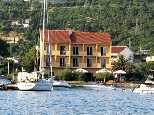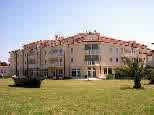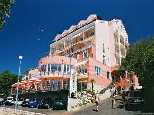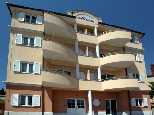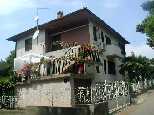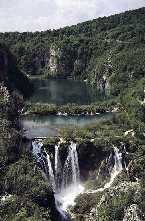


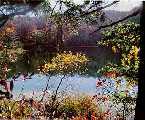
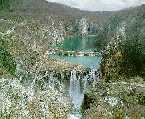


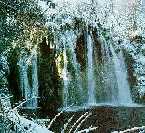


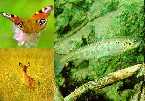

 |
"Plitvice Lakes"
National Park
Plitvice Lakes are located in eastern Lika between the Mala
Kapela and Licka Plesevica mountains. Formations of a lime crust on underwater
vegetation where water from the Korana River wash over, give shape to cascades
from which evolve a series of sixteen terraced lakes with flowing crystal
clear turquoise colored water. Water spills over from lake to lake in the
form of stunning waterfalls, creating a unique masterpiece of natural art.
Much of the Plitvice Lakes area is covered in dense forest mostly comprised
of beech, fir, spruce and white pine. Amongst the diversity of fauna, local
inhabitants include the bear and wolf, as well as certain rare bird species
such as the Grouse and Horned Owl.
Because of varying natural characteristics, the lakes
are divided into either upper or lower lake systems. The upper lakes are
set on a dolomite base where surface erosion forms a feature rich relief
and common stream valleys. The lakes and various waterfalls are surrounded
by forest. The lower lakes are set on a limestone base in a gorge with
towering steep cliffs, forged by a river in a time before the lakes had
evolved. The upper lakes include: Proscansko Lake, Ciginovac, Okrugljak,
Batinovac, Vir, Veliko and Malo Lakes, Galovac, Milino Lake, Gavanovac,
Kaluderovac and Novakovic-brod. The upper lakes occupy an area of about
200 ha of which three quarters belongs to the two largest lakes: Kozjak
and Proscasnsko.
Karstic spring lakes are replenished by Crna and Bijela
Rivers, as well as from the Plitvice and Sartuk. Influenced by growing
sediment barriers, water tributaries endlessly change location throughout
the cascade system, perpetually changing the depth, size, shape and even
number and arrangement of lakes. The crown of this distinctive symphony
of water is Sastavci (tributary of the Korana River and Plitvice Brook)
with a 72 m high waterfall. Cavern sites contribute to the natural beauty
of the Park. Most caverns are located in the Park's limestone area, and
include Supljara, Golubnjaca, Mracnjaca and others. Caverns that have formed
in the sediment under the waterfalls are particularly special.
Because of its unique natural beauty, in 1949 the Plitvice
Lakes area of approximately 295 km², was declared a National Park.
Many surrounding pastures and forests are included within the protected
area in which arbitrary activities and changes are strictly forbidden.
Only those activities that will improve and protect the natural environment
are permitted. The first mountain cabin was constructed in 1852 and first
hotel in 1861. Plitvice Lakes are the most famous of Croatian National
Parks and are amongst the most beautiful natural sites in Europe. In 1979
UNESCO listed the Lakes as natural heritage of world significance.
Plitvice Lakes can be visited at any time of the year.
Walks along forested paths and wooden bridges, woodland and mountain air,
and above all, the very beauty of the lakes and waterfalls themselves,
attract large numbers of visitors from all over the world. Besides organized
walks, the Lakes can also be toured with tourist trains and electric boats.
The average annual temperature in Plitvice Lakes ranges from 8-10°
C, while average precipitation is from 1.200 to 1.400 mm. Snow is common
from November through to the end of March, which makes skiing and sledding
possible, while in December and January the lakes are covered in ice. During
the summer months, the water temperature in Proscansko and Kozjak Lakes
rises to 24° C so it is possible to go swimming.
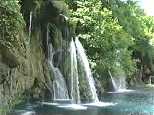
Download movie clip (460 kB, 45 sec.)
|


